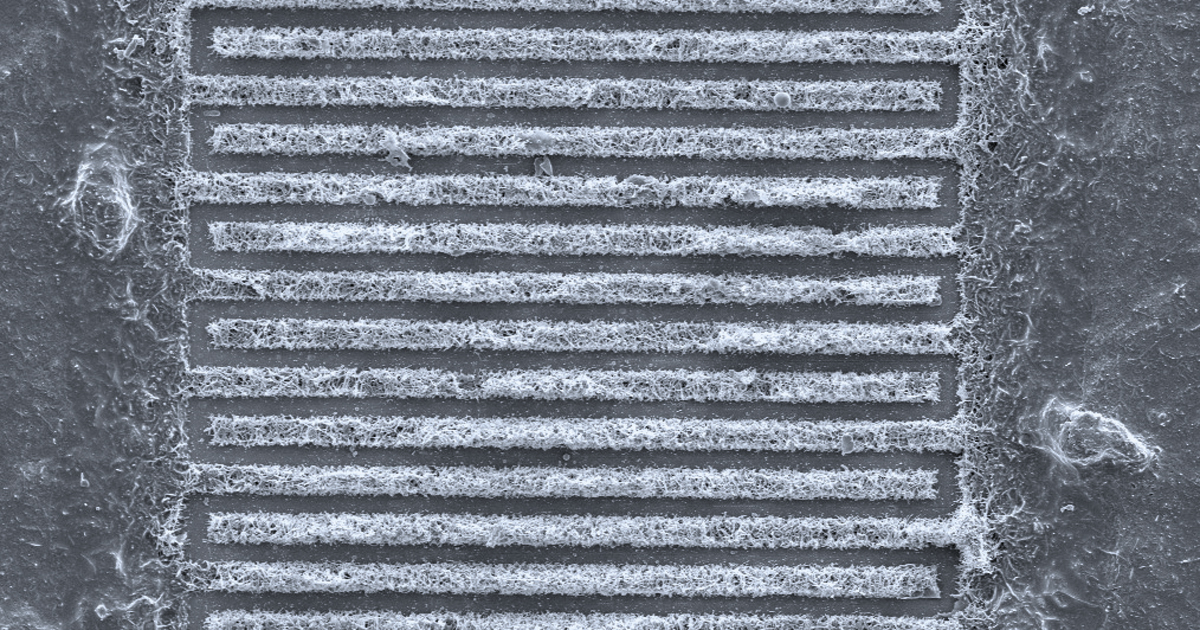Physicists from São Carlos and Campinas, in the state of São Paulo, have developed a high-precision technique for manufacturing microsensors used in the flavor detection systems of electronic tongues. These systems use microscopic sensors to identify differences in the electrical properties of aqueous solutions. The new microsensor production method uses ultrashort laser pulses to cut extremely fine films from a graphene-based polymer placed on a glass surface. Lasting a fraction of a second, the laser pulse gives operators greater control over the amount of energy hitting the film, allowing them to make more precise cuts and perforations. In the experiments, the group led by Cleber Mendonça, a professor at the University of São Paulo (USP) in São Carlos, used the laser to sculpt microsensors in polyacrylic acid graphene films, a biodegradable and bioabsorbent polymer. “One of the advantages of the technique is that it can produce sensors with complex geometries in different atmospheres, without the need for clean rooms or masks,” explains physicist Kelly Tasso de Paula, a PhD student from Mendonça and lead author of the study. In initial tests, the microsensor distinguished pure water from solutions containing sugar, cooking salt, and hydrochloric acid (Optics and Laser Technology, May).
RepublishInnovation
Sensors for electronic tongues

Microsensor sculpted from polylactic acid graphene film for use in flavor detection systems
Kelly Tasso De Paula / IFSC-USP